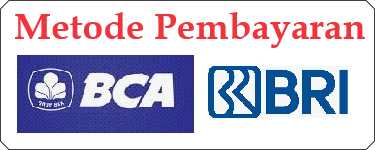DAYA TARIK WISATA DAN DAYA DUKUNG KAWASAN WISATA DI TAMAN WISATA ALAM PULAU POMBO MALUKU TENGAH
DOI:
https://doi.org/10.69840/marsegu/1.6.2024.607-625Keywords:
Attractiveness, Carrying Capacity, Natural Tourist ParkAbstract
This research aims to determine the tourist objects and attractions in the Pombo Island Nature Tourism Park and also the carrying capacity of the Pombo Island tourist area. This research is a qualitative and quantitative descriptive research in the form of written words and analysis of tourist objects and attractions. The research results showed that there were 17 types of plants including seedlings, saplings, poles and trees. There are 23 types of birds found, there are also nesting habitats for gosard birds and hawksbill turtles which can be a tourist attraction. The calculation of the ecotourism carrying capacity index in the Pombo Island area has a value of 73.80%, indicating that the Pombo Island beach is "very suitable" to be used as an area for beach ecotourism. The PCC value of 1,044 means that the Pombo Island TWA area can accommodate 1,044 tourists/day.
Downloads
References
Departemen Kehutanan 2007. Kumpulan peraturan dan pedoman pariwisata alam. Pelatihan Pariwisata Alam 31 Oktober -2 November 2007. Direktorat Wisata Alam dan Pemanfaatan Jasa Lingkungan. Jakarta: Direktorat Jendral Perlindungan Hutan dan Konsevasi Alam.
Fandeli, C. 2000. Pengertian dan konsep dasar ekowisata. Yogyakarta, Fakultas Kehutanan UGM
Fandeli C dan Nurdin, 2005. Pengembangan Ekowisata Berbasis Konservasi di Taman Nasional. Fakultas Kehutanan Universitas Gajah Mada. Yogyakarta.Fandeli, C., 2010. Pengusahaan Ekowisata. Fakultas Kehutanan. Universitas Gadjah mada. Yogyakarta..
Kaya, I. R., de Lima, F., Kaya, M., & Matinahoru, J. M. 2020. Manajemen Ekosistem Pesisir Pulau-Pulau Kecil Untuk Ekowisata Berkelanjutan Di Pulau Saparua. MAKILA, 14(1), 14-24.
Kebudayaan, D. 2017. Pariwisata. 2007. Buku Pegangan Penatar dan Penyuluh Kepariwisataan Indonesia
Lange, G.M., 2015. Tourism in Zanzibar: Incentives for sustainable management of the coastal environment. Ecosystem Services 11, 5-11.
Maya M.S. Puttileihalat, Henderina Lelloltery. 2022. Kajian Ekowisata Berbasis Kesesuaian dan Daya Dukung Kawasan Pantai Pulau Pombo Kabupaten Maluku Tengah. MAKILA: Jurnal Penelitian Kehutanan. Ambon
Oktadiyani, P. 2006. Alternatif strategi pengelolaan taman wisata alam Kawah Kamojang Kabupaten Bandung Propinsi Jawa Barat (Skripsi). Institut Pertanian Bogor, Bogor.
Pangesti 2007 dalam Hazeri, G. 2014. Studi Kesesuaian Pantai Laguna Desa Merpas Kecamatan Nasal Kabupaten Kaur sebagai Daerah Pengembangan Pariwisata dan Konservasi. Skripsi.Fakultas Pertanian. Universitas Bengkulu, (tidak dipublikasikan)
Tan, W.J., C.F. Yang., P.A. Chateau., M.T. Lee., & Y.C. Chang. 2018. Integrated coastal zone management for sustainable tourism using a decision support system based on system dynamics: A case study of Cijin, Kaohsiung, Taiwan. Ocean and Coastal Management 153, 131-139
Tika, P. N. 2005. Metodologi Penelitian Kualitatif: Observasi Partisipatif dalam Penelitian Sosial. Jakarta: Penerbit XYZ
Downloads
Published
Issue
Section
License
Copyright (c) 2024 Maxel Tjoa, Henderina Lelloltery, Maya Puttileihalat (Author)

This work is licensed under a Creative Commons Attribution-ShareAlike 4.0 International License.




















